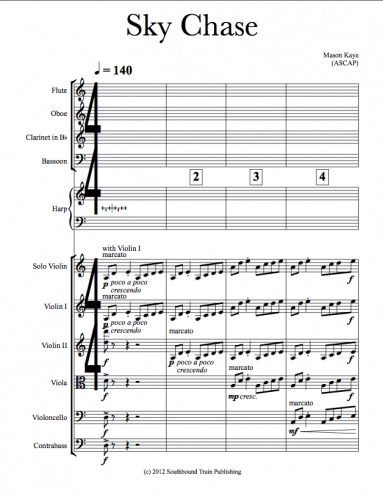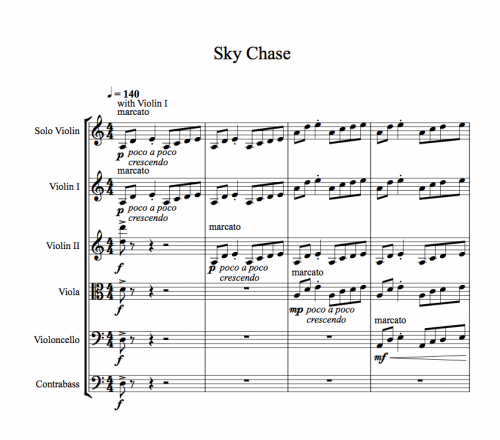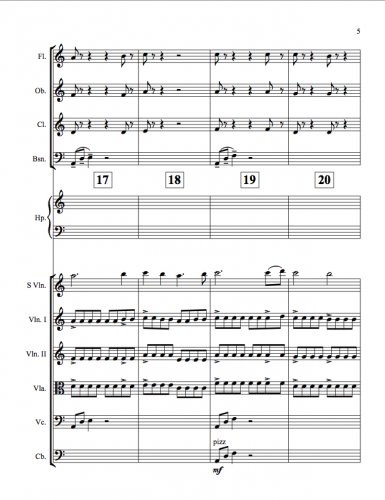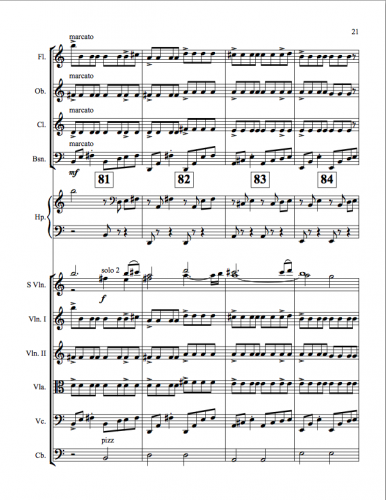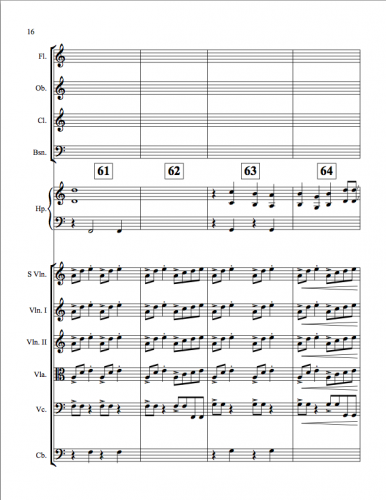Flip Flops in the Windy City: A little bit of orchestration
We have a recording session coming up this Friday, and I have written a pretty awesome string orchestra piece featuring solo violin. But on top of a 12-piece string orchestra, we have four winds and a harp. Champagne problems, I know, but what to do?
The Music
I have written a piece for part of my game scoring final. The assignment is to come up with a game (just an idea, but described in detail), and then write 25 minutes of music for the game, in either a non-linear or generative vein. The point is to write in-game music, i.e. interactive, not cut-scene & linear. I thought up a game called Sky Chase, a 1st-person flying game where you try to fly through a series of rings in the sky. Pretty simple. All the music is written at the same tempo and has the same tonal center, so the order of the cues can be random.
The Cue
For the recording session, I wrote a string quintet orchestration of the main theme in the style of Karl Jenkins. It is meant to be played by either 5 strings, or a small string ensemble, which is perfect for this setting, since we have 12-piece string orchestra.
The “Problem”
I have access to 12 strings, 4 winds, and a harp, but my piece is intended for just strings! This is what I like to call a champagne problem (the term “first world problem” is a little too loaded). When we were recording at CRC, we put the strings in one room, and the winds in another. This meant that I could fully orchestrate for the ensemble, and if I didn’t like what the winds did, I didn’t have to use them since they were isolated from the strings. But we are recording at Hinge Studios this time, and we have a big enough room to put both strings and winds in. Overall this is better, since we get a richer sound by having everyone in one room. But I lose all my flexibility! What to do?
The Solution
I fully orchestrate, but use the winds as accent doubles, meaning just have them double the strings at dynamic accents. This means that the strings add color to the sound and dimension to the dynamics, but don’t play a supporting role in the underlying composition of the piece. I’ll let the score explain:
Here we see that the flute, oboe, and clarinet are doubling the texture played by the high strings, while the bassoon doubles the pizz line played by the low strings. “But Mason, this completely changes the sound of a string orchestra piece!” you say. This is true. Luckily, the union musicians we hire are skilled enough to sight read this at 99% fidelity the first time through. If I don’t like how it sounds, I’ll just ask the winds to remain tacet (not play) for the rest of the rehearsal.
The Harp
Luckily, the harpist is still in an isolation booth. This means I can write crazy stuff for the harp, and if I don’t like it, I don’t have to use it. I even wrote a melody for the harp that I probably won’t use:
The Mockup
I’ve been working off of the string quintet mockup. I’ve posted it on SoundCloud, and it will very interesting to compare to the recording this Friday…

